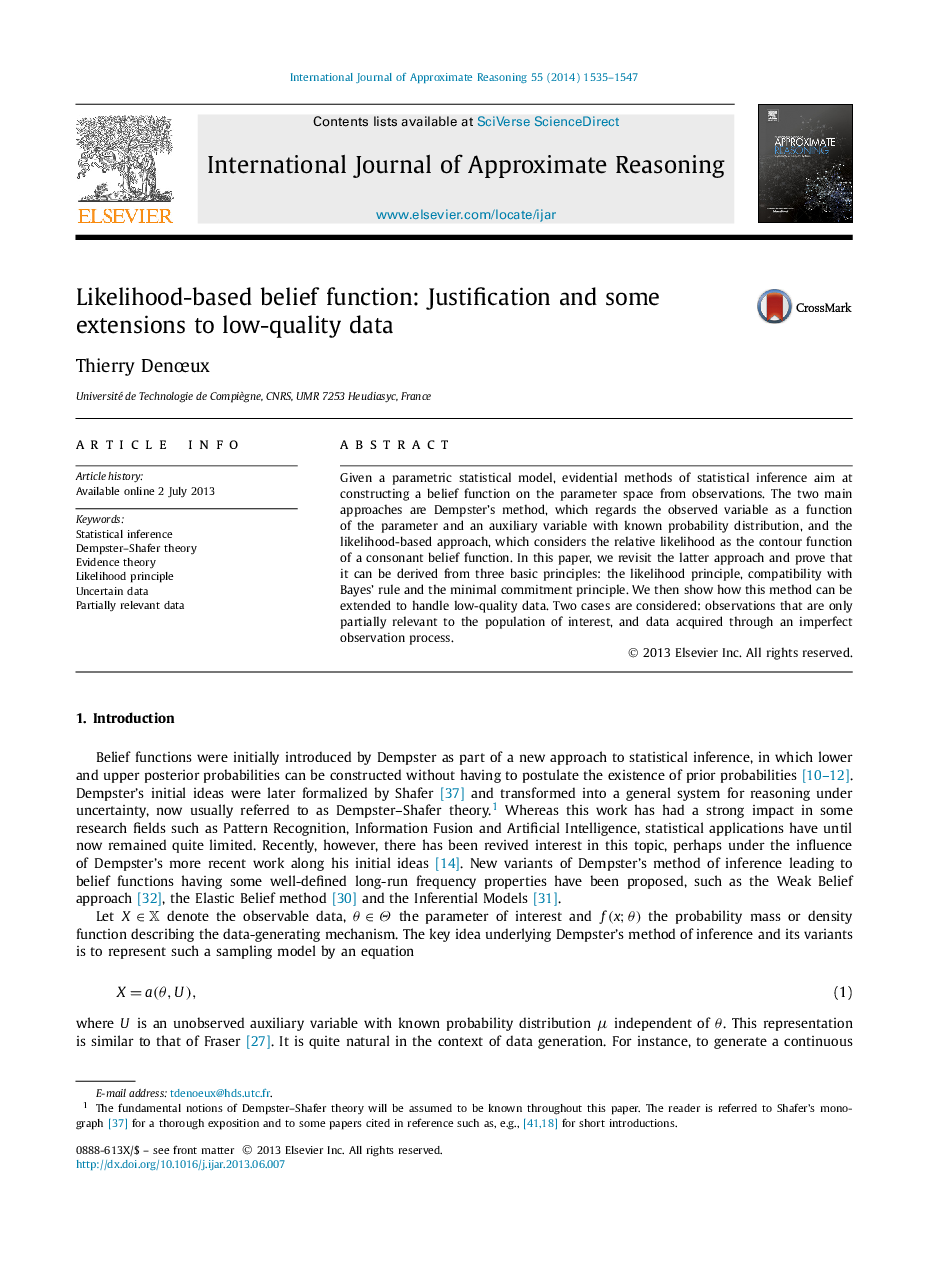| Article ID | Journal | Published Year | Pages | File Type |
|---|---|---|---|---|
| 397322 | International Journal of Approximate Reasoning | 2014 | 13 Pages |
•The construction of a belief function from the likelihood function is justified.•This approach can be extended to statistical inference from low-quality data.•The cases of partially relevant and uncertain data are considered.
Given a parametric statistical model, evidential methods of statistical inference aim at constructing a belief function on the parameter space from observations. The two main approaches are Dempster's method, which regards the observed variable as a function of the parameter and an auxiliary variable with known probability distribution, and the likelihood-based approach, which considers the relative likelihood as the contour function of a consonant belief function. In this paper, we revisit the latter approach and prove that it can be derived from three basic principles: the likelihood principle, compatibility with Bayes' rule and the minimal commitment principle. We then show how this method can be extended to handle low-quality data. Two cases are considered: observations that are only partially relevant to the population of interest, and data acquired through an imperfect observation process.
